Armoury of insights: how to engineer exciting ideas
Why do you follow a writer?
What keeps you coming back for more?
Why do you recommend them to friends?
I’ve been thinking about these questions a lot recently. Especially with AI and the crazy amount of competition — you can’t afford to be a commodity in today’s arena. There’s a stretching gap between the best writers and the rest, and I’d like to be on the right side of that equation over the next few years.
I’m sure you would, too.
Today, I’ll share one thing I’ve learned about setting yourself apart.
What makes quality writing?
I heard Morgan Housel say recently that people don’t remember books; they remember sentences. This goes to show that quality writing isn’t about length. So long as you don’t commit too many sins, it’s not about grammar, either.
Instead, quality is about emotion. You must make your audience feel something (ideally, not boredom). When I analysed my favourite non-fiction writers, I could clearly see the emotion they create most:
Insight.
Insight is the ‘aha’ moment, the lightbulb dinging in your head. It’s a combination of intrigue and delight as you gain a new perspective on an old problem. When you feel it, you’re drawn closer to the writer because they’ve surprised you with exciting information.
To create an insight, your ideas need three things:
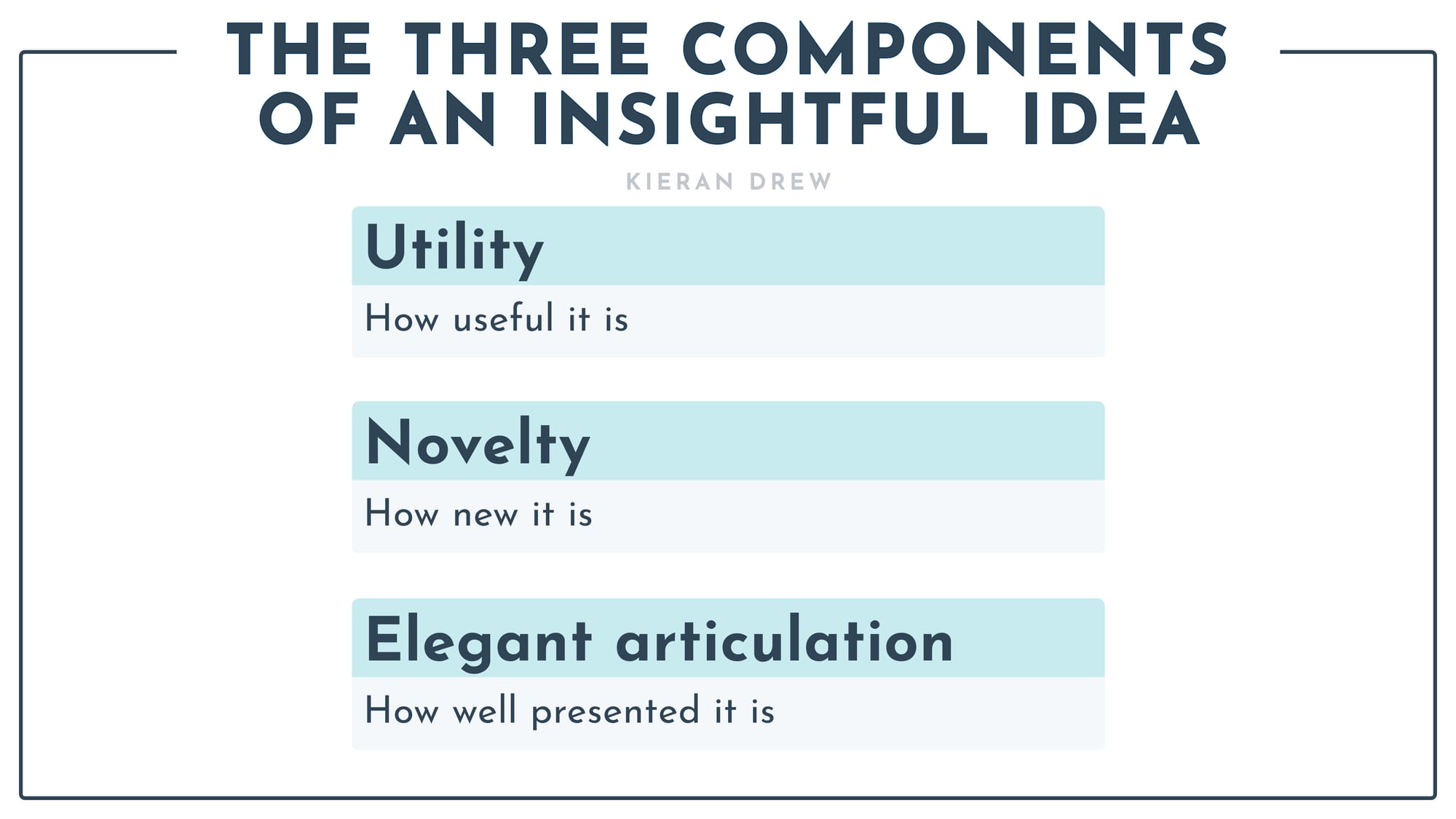
The excitement begins when you stack these insights together.
Armoury of Insights
When Buffett and Munger bought businesses, they looked for durable competitive advantages: Moats.
As a writer, the moat is your collection of unique and useful concepts — an Armoury of Insights. These ideas are intellectual real estate that stops competition from moving in on your space.
Consider Seth Godin — the most popular marketer of our time. Peak inside his Armoury, and you’ll see why. A few of his ideas include:
- Permission Marketing: Getting your reader’s permission before marketing to them
- Purple Cow: The need to be remarkable in a crowded marketplace
- Tribes: Attracting a group of people around a common idea or purpose
- Sneezers: The people who have the power to spread ideas
- The Dip: Surviving the inevitable low point in projects
These concepts are easy to recall. For example, when I start anything, I think about The Dip and remind myself to zoom out. As I build my business, I think about the Purple Cow. High Impact Writing was my first shot at remarkability and it 3x’d my business in 4 months.
The result? I’m a raving fan. And I reciprocate by expanding his reach (you could say I’m a sneezer).
3 years ago I couldn’t make a single dollar online.
— Kieran Drew (@ItsKieranDrew) July 4, 2023
But my business took off when I started studying the master of modern marketing:
Seth Godin.
Here’re 10 ideas that helped me the most (and how to apply them in your biz): pic.twitter.com/xfspuCumtw
5 techniques to engineer insights
I’m just a student of insights, but after two years, a graveyard of ideas, and a few hits, I’ve found five techniques to be effective:
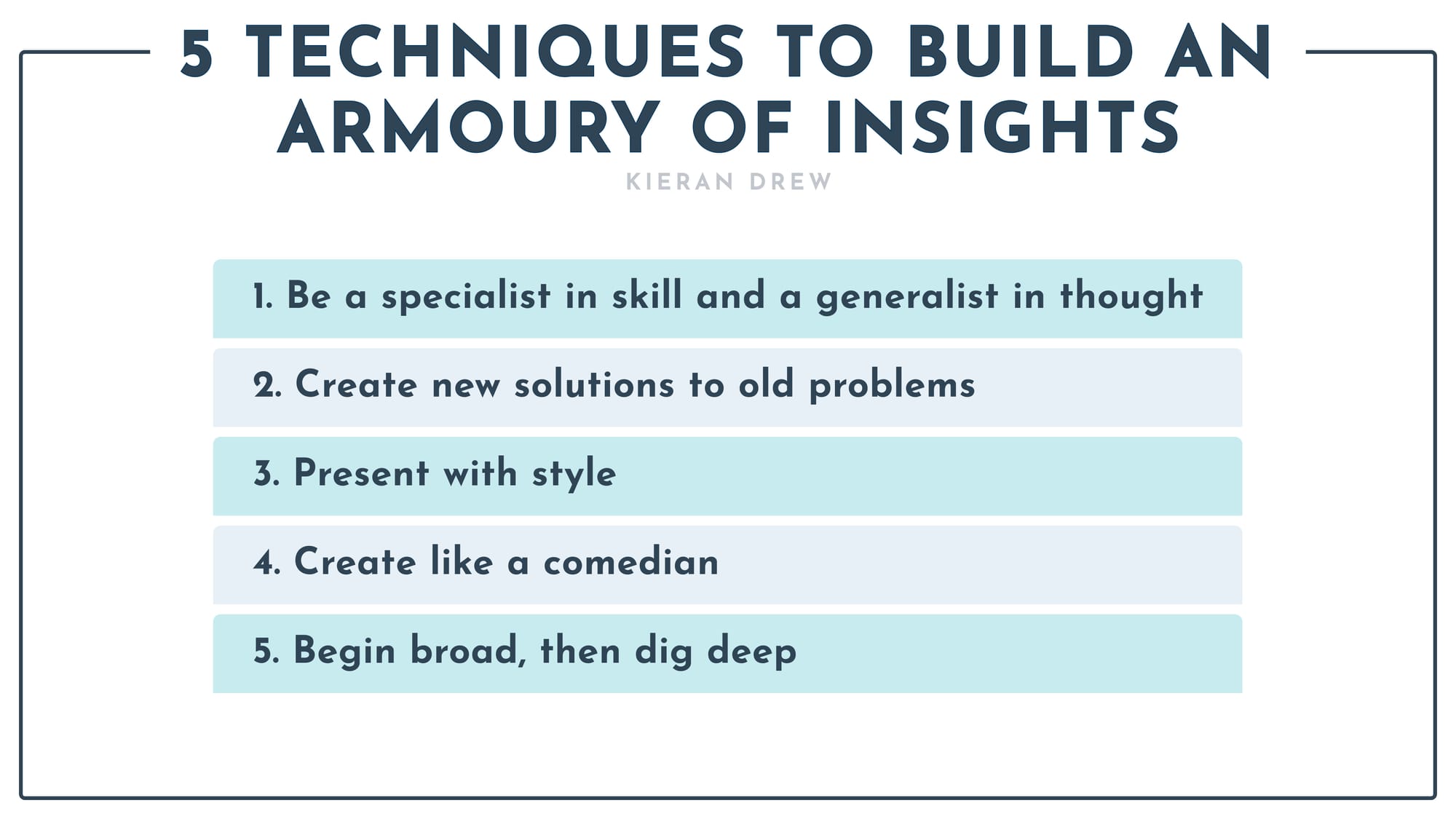
Let’s unpack each.
1. Be a specialist in skill and a generalist in thought
In a recent interview, Ben Shapiro, the founder of Stratechy, a $3m+/year newsletter, shared a writing method I’m fond of:
Combining mental models with your area of expertise.
Mental models are tools to help make sense of the world. They’re simplified representations of reality that we can use to process information, make better decisions, and explain how things work.
Consider ‘adaptation’, a biological term. Fish who couldn’t swim quickly became shark food. But we also use it to explain how businesses must adapt to their environment to survive and thrive. Intuitively, this makes sense to us. Much like a fish must develop traits, we know a business must also find their advantage.
However, using this technique isn’t limited to people who understand mental models. It’s about drawing inspiration from the world around you and using it to explain your expertise.
For example.
I could say the key to great writing is to write more. But that’s as exciting as saying the sky is blue. However, if I explain it’s like building muscle in the gym and you don’t notice results day-to-day, but if you train for years, your sentences will be as chiselled as your abs — this might help you push through painful writing sessions.
Use familiar concepts to explain your ideas.
2. Create new solutions to old problems
A simpler way to create insights is to be really bloody useful.
We consume content because we have a job that needs to be done. When we find someone who solves our problems, we keep coming back for more. Especially if we like them.
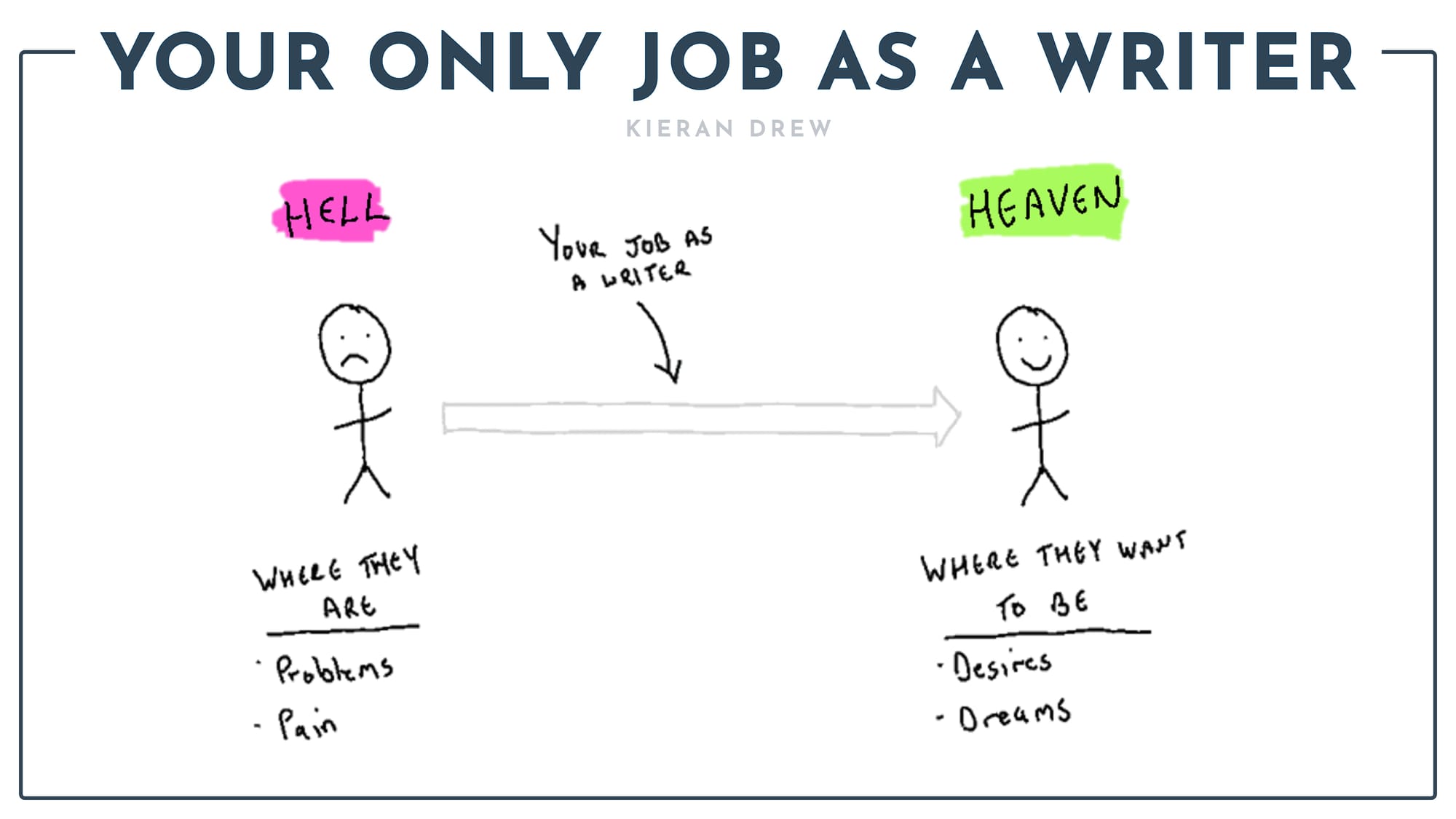
But a useful idea won’t stop the scroll if everyone else is saying it, too. You must coin your own terms like Godin does and wrap your ideas in interesting analogies, stories, anecdotes, and metaphors.
Consider my term Magnetic Writing.
Instead of the snoozefest of saying ‘content builds an audience’, I talk about pulling people into your world. It’s more memorable and visual. This leads us to my next point.
3. Present With Style
Concepts with great packaging are easy to share.
This is why some memes take over the internet, yet most die a quiet death. Presentation is as important as the idea itself.
You will learn a lot about packaging from studying the founder of Visualise Value, Jack Butcher.
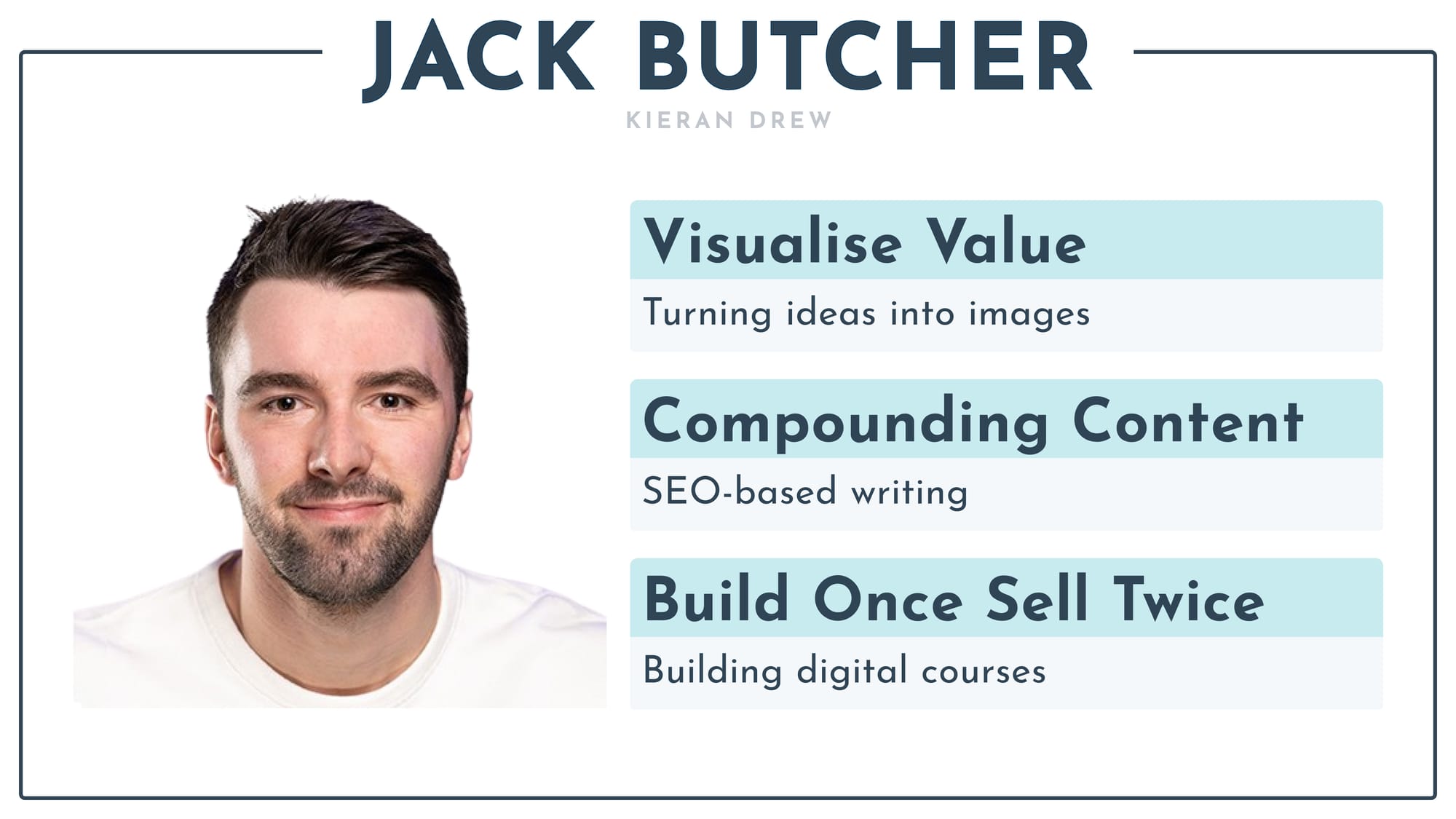
Everything Butcher touches is clear, concise, and catchy.
He explains, “If you nail the language that represents your idea, and deliver on the promise that it makes, the validity and memorability of it gradually increases… The better the overlap between the name and the thing the name represents, the less work required to get people to remember it.”
To present with style, you can use:
- Alliteration
- Juxtaposition
- Rhythm & Rhyme
- Analogy and metaphor
The result is sentences and statements that make your reader go ‘Ooff’ - a highly viral expression.
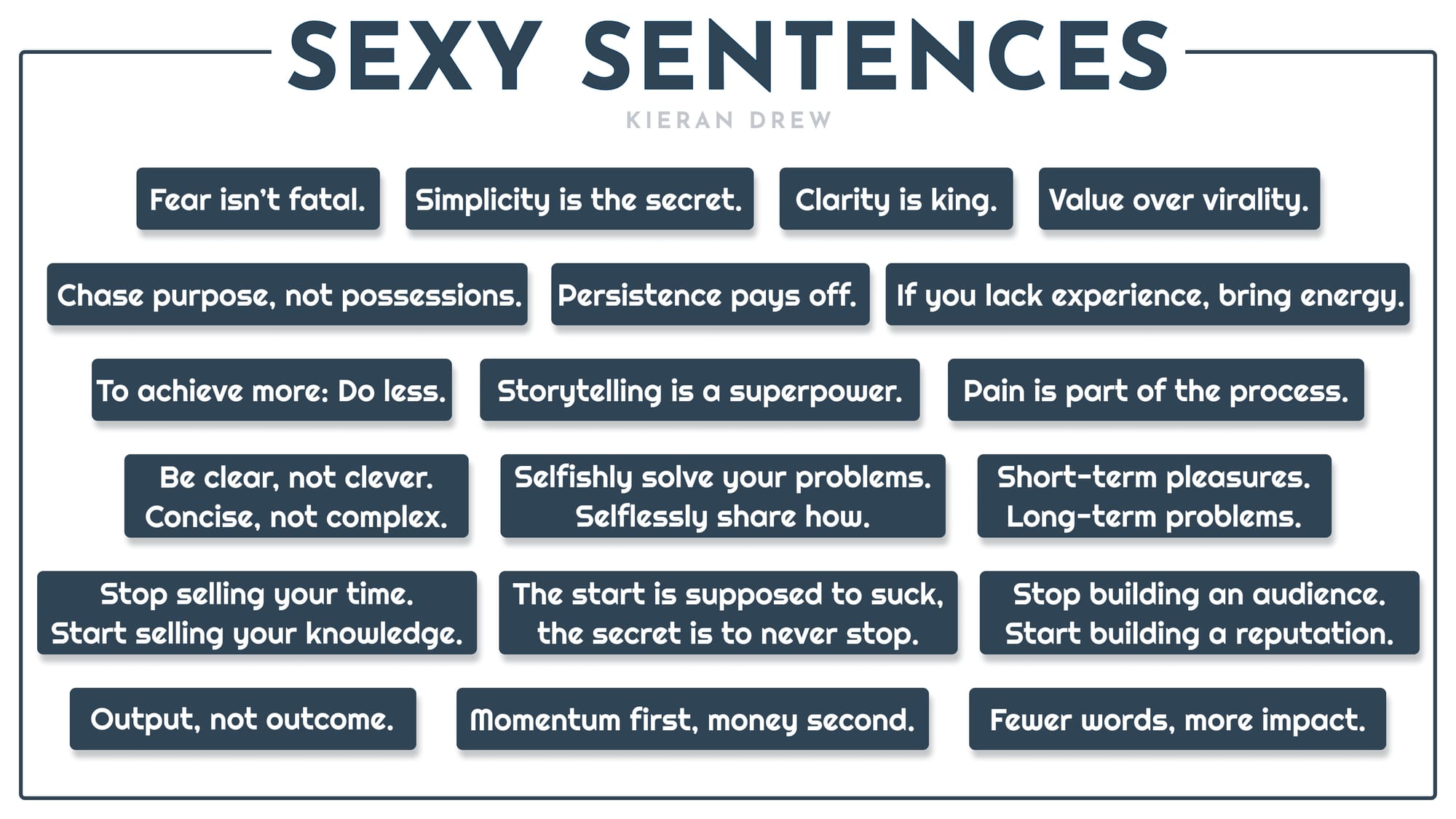
4. Create like a comedian
Last month, I saw my favourite comedian, Jimmy Carr, in Leeds.
The first half of the show was a masterclass in quality, with impeccable timing and zero wasted words. But in the second half, Carr whipped out a notebook to test jokes, scoring them by audience response. Some were brilliant, some average, and some missed the mark entirely. He was building his ideas in public, using fast feedback loops to find the best emotional response.
You can do the same with social media.
For example, I first mentioned Magnetic Writing in July 2022:
The 3 Pillars of Magnetic Writing:
— Kieran Drew (@ItsKieranDrew) July 27, 2022
Storytelling:
· Struggle
· Progress
· Transformation
Personality:
· Habits
· Beliefs
· Desires
Value:
· Useful
· Impactful
· Actionable
Nail all 3, and you'll find your fans.
It caught some interest, so I distilled it further and added a visual element.
The 3 pillars of magnetic writing:
— Kieran Drew (@ItsKieranDrew) December 27, 2022
1. Advice
2. Personality
3. Storytelling
Nail all 3 and I guarantee you'll attract success. pic.twitter.com/1sUT0na7xn
Because it resonated, I brought the concept to life with actionable steps:
Writing tweets is the simplest way to build an audience online.
— Kieran Drew (@ItsKieranDrew) March 11, 2023
But most people don't know where to start.
Steal my '3 Pillars of Magnetic Writing' content system, and you won't be one of them: pic.twitter.com/ArKrTdIKqh
Fast forward to today, and Magnetic Writing is a core part of my course High Impact Writing. It’s also the entire ethos of my Magnetic Content Masterclass. I can confidently speak about it better than anyone else in the world and I’ll continue to refine it as I build.
Leading me to the final point.
5. Begin broad, then dig deep
To take an idea from good to great requires work. You’ve laid a seed, but to enjoy the fruits, you need to grow a tree.
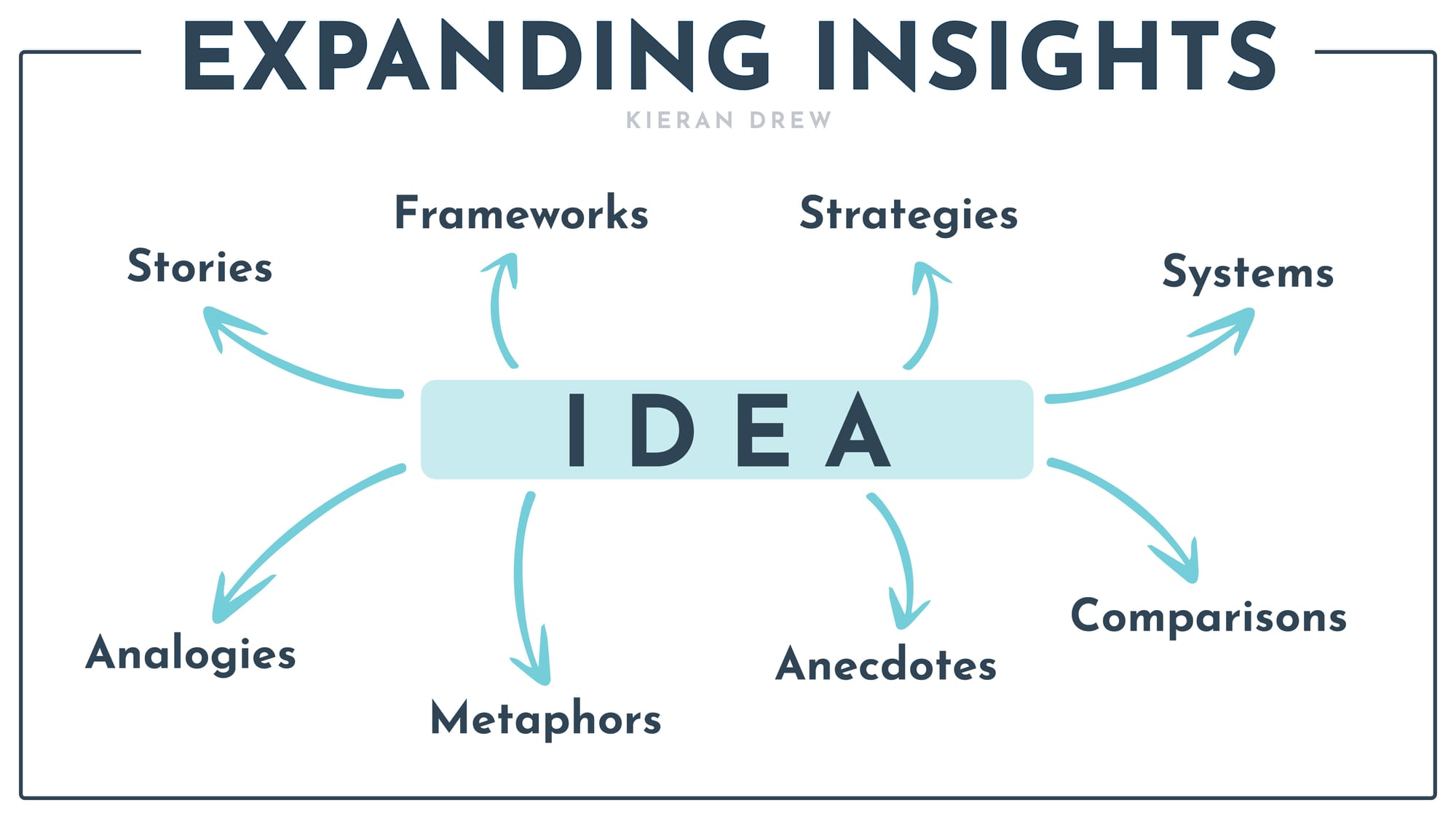
This is the hardest part: Talking about one idea in one thousand different ways. Why is it difficult? Aside from the creative challenge, there are three roadblocks to watch out for:
- The Law of Diminishing Returns: To take an idea from a B- to an A+ requires much more work than the initial ideation. It’s easier to keep making noise instead of doubling down on signal.
- Lack of visible progress: As you iterate, you’re like Michelangelo working on the Statue of David. Except you can’t see an idea like you can marble.
- Boredom: You crave novelty just as much as your reader. But unlike your reader, you spend hundreds of hours with one idea. This requires real persistence.
My best advice is to build concepts that you find fascinating. Energy shows through onto the page, and the best ideas to create are the ones you wish existed when you started.
The other tip I can give you is reps. I have 50 ideas that didn’t survive the testing phase. If you stumble after one flop, you’ll give up before the results roll in. Instead, set a constraint for 2024. As you write, don’t just share ideas. Aim for new insights. See what sticks. Enjoy yourself.
One interesting idea won’t change your world. But an Armoury of Insights will.
Best of luck.
1. Get a step-by-step blueprint for attracting an engaged audience with High Impact Writing
2. Join a weekly masterclass and get 5 content ideas delivered to your inbox every Thursday
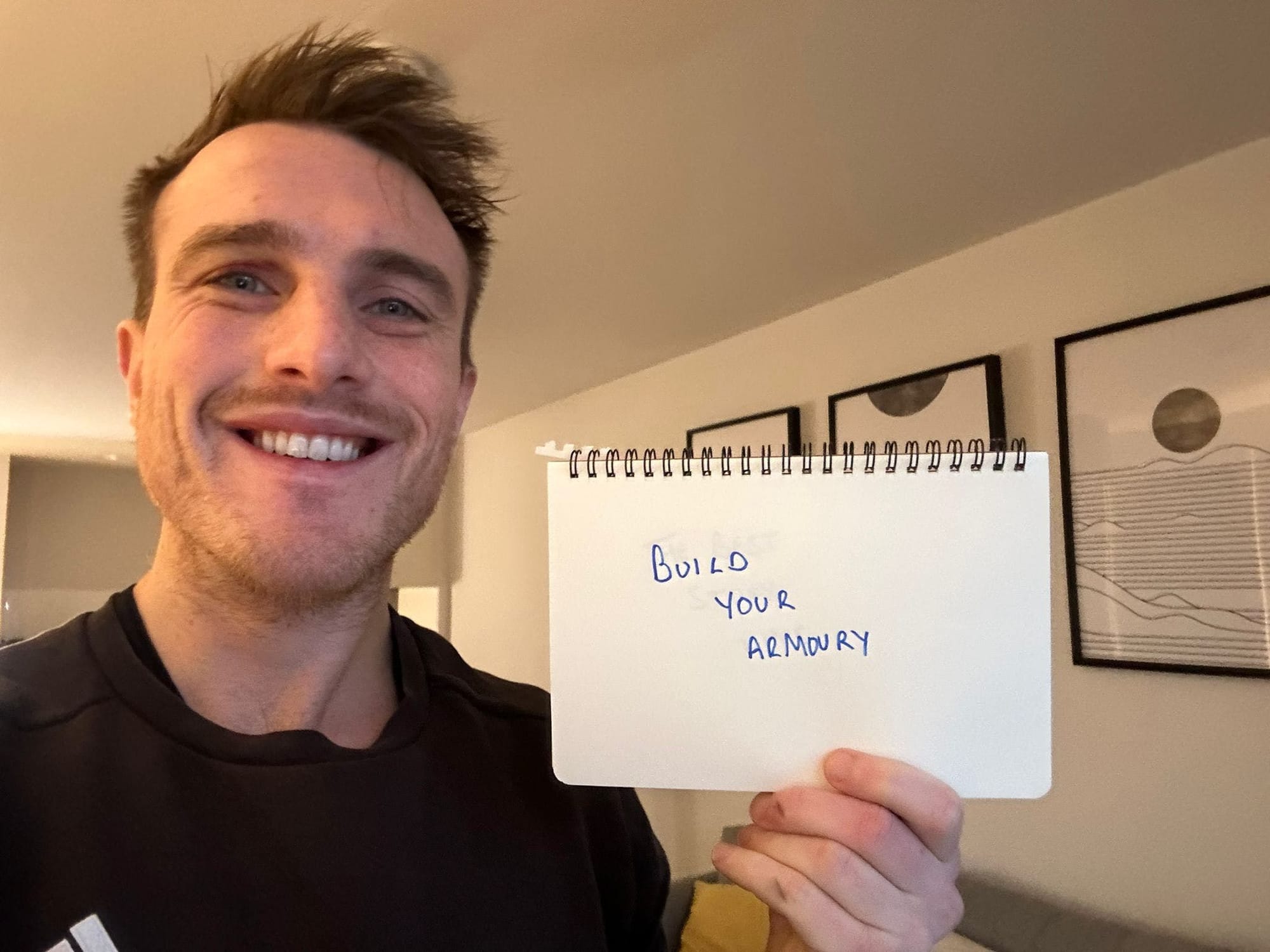
About Kieran
Ex dentist, current writer, future Onlyfans star · Sharing what I learn about writing well, thinking clearly, and building an online business